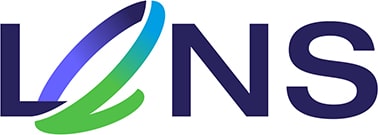The LENS project focuses on the means to mitigate noise and air pollution by providing solutions to measure and curb emissions, as well as support enforcement personnel to identify pollution measures, such as illegal tampering. These pilots will test the noise- and air pollution assessments in the three cities of Leuven (BE), Florence (IT) and Paris (FR). Currently, local authorities are cooperating with LENS consortium partners to identify suitable vehicle measuring techniques and locations. These tests will take place in the spring- and summer months of 2024.
The selection of these three pilots is based on specific criteria such as population density, density of light vehicles (LVs) in the fleet, regions with a high number of noise complaints from citizens, and areas with exceeded pollution levels. Even though the pilot plans are not finalised, an overview of the objects and aims of the pilots, tools, as well as related models are given throughout the next paragraphs.
The objectives of the case studies:
The primary objective of these case studies is to demonstrate the extent to which interventions can effectively reduce environmental and health problems in the identified problem areas. While the exact interventions to be modelled will be determined as the project progresses, they are likely to include the following four main aspects:
- Improved detection and control of tampering: This includes more effective methods of detecting tampering in vehicles, including advanced digital sealing and testing methods.
- Traffic calming and restriction measures: Strategies aimed at reducing traffic congestion and noise levels, possibly through the implementation of traffic restrictions in specific zones.
- Improvements to the Type Approval (TA) process: Improvements to the type approval process. This guarantees that vehicles meet all EU rules related to safety, environmental aspects like emissions, as well as conformity of production requirements. These TA processes are a requirement for the vehicle authorization process before a EU-wide market release.
What the models aim to achieve:
The models developed in these case studies serve a critical purpose. They are designed to calculate the reduction in noise at building facades, the reduction in emissions within the model domain, as well as the health benefits resulting from reduced noise and emissions. In addition, these models will assess the costs and social challenges associated with implementing different interventions.
Sharing knowledge and tools:
One of the key objectives of LENS is to ensure that the knowledge and tools generated through these case studies are made available to other stakeholders interested in applying them in their specific settings and cases. This collaborative approach aims to extend the impact of the project beyond its immediate scope.
In summary, the three case studies within LENS represent important testing grounds where a range of interventions to address the noise and emissions issues associated with light vehicles will be explored. It is expected that these studies will not only provide valuable insights, but also practical recommendations for authorities, policy makers and other stakeholders to improve urban mobility and reduce its negative impacts on the environment and public health.

